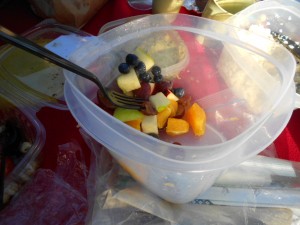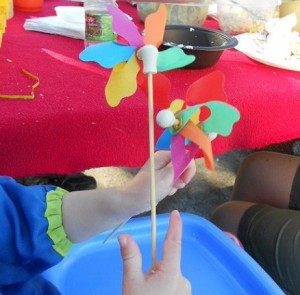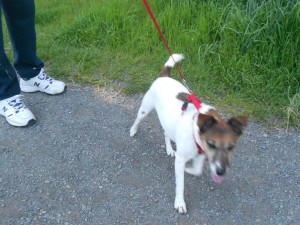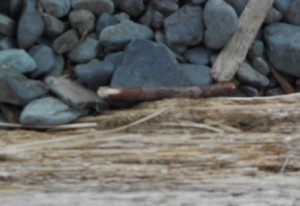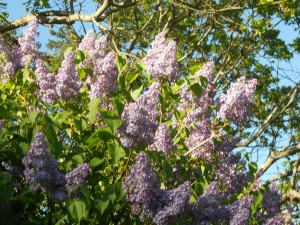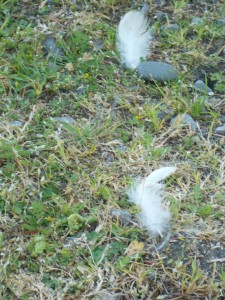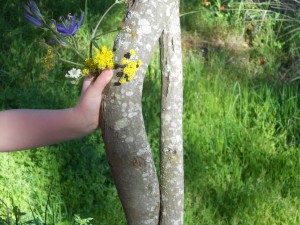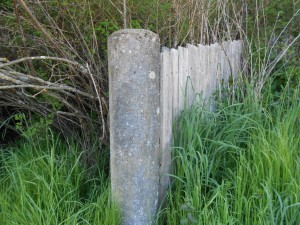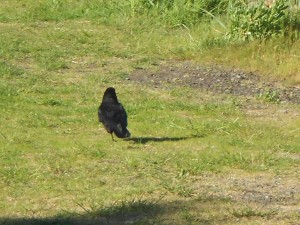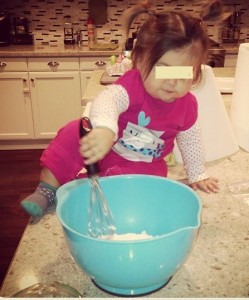Gardens are fun places for learning such as math, language, science, art, interacting with others, connecting to nature and more, as well as for some kindergarten readiness.
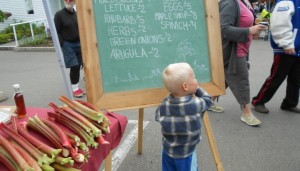 On the weekend, there is a wonderful farmer’s market in our area. While picking up some fresh rhubarb, this little 3 year old boy was checking out the writing on the board. He couldn’t read the words and prices, but he could ‘read’ the pictures so he shared about the tree growing in the garden. Reading is based on the idea that squiggles have a meaning, they are not just random. The squiggles in the drawing of the tree hold the message “this is a tree”. Reading letter squiggles can grow from that. Being so helpful, he also picked out the best bunch of rhubarb. He practiced some social skills, conversational language, and interacted positively, all in space of a few minutes.
On the weekend, there is a wonderful farmer’s market in our area. While picking up some fresh rhubarb, this little 3 year old boy was checking out the writing on the board. He couldn’t read the words and prices, but he could ‘read’ the pictures so he shared about the tree growing in the garden. Reading is based on the idea that squiggles have a meaning, they are not just random. The squiggles in the drawing of the tree hold the message “this is a tree”. Reading letter squiggles can grow from that. Being so helpful, he also picked out the best bunch of rhubarb. He practiced some social skills, conversational language, and interacted positively, all in space of a few minutes.
The farmer’s marked wasn’t exactly a garden, but certainly had garden produce. Back in the garden, kids can also practice some everyday math. There’s lots to count: the number of seeds, new sprouts, leaves on plants, plants that have flowers, or rows. Kids can use comparisons such as bigger leaves, taller plants, longer rows, etc. Figuring out more is another math activity. Are there more little plants or more big ones? Are there more flowers or more plants? The answers will not always be accurate but that’s okay. Remember fail = first attempt in learning.
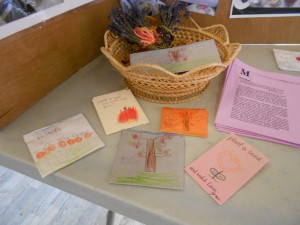 Gardens usually have some strategies for knowing what plants are growing where, such as sticks, stones, or other markers that start a row. Kids may be able to draw pictures of what’s planted to attach to the sticks or paint the rocks with a picture of the veggie. Sometimes there are boxes around plants or strings to divide up an area. These are organizational tools and will go into the folder in the brain, along with other experiences, for “Ways to Organize.”
Gardens usually have some strategies for knowing what plants are growing where, such as sticks, stones, or other markers that start a row. Kids may be able to draw pictures of what’s planted to attach to the sticks or paint the rocks with a picture of the veggie. Sometimes there are boxes around plants or strings to divide up an area. These are organizational tools and will go into the folder in the brain, along with other experiences, for “Ways to Organize.”
What are some other learning activities that can grow as kids help in the garden?

